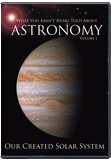
Saturn’s Rings—Short-Lived and Young
Originally published in Journal of Creation 11, no 1 (April 1997): 1.
Abstract
Creationists have long argued that the rings of Saturn are less than 1 million years old, in spite of evolutionists’ claims that the planet is 4.5–5.0 billion years old, the same as the rest of the Solar System.1 The rings are made up of rock and ice fragments that are being drawn closer and closer to Saturn’s surface by the planet’s gravitational pull.
Astronomers have long believed that Saturn’s rings were formed when a moon or comet about 200 km across was shattered by an impact close to the planet, leaving a mass of debris. This impact, it is suggested, happened no more than 100 million years ago.2
It was in 1852 that Otto Struve noted in the Memoirs of the St Petersburg Academy of Sciences3 there had been changes in the widths of the rings and a progressive decrease in the width of the gap between the planet and the inner edge of ring B, relative to the combined width of ring A. Old drawings and descriptions were used to evaluate this ratio—Huygens (1657), Huygens and Cassini (1695), Bradley (1719), Herschel (1799) and W. Struve (1826)—results indicating a rapid approach of the inner edges of the rings toward Saturn, while the outer edge of the outermost ring (ring A) had changed little.
Now an international team of scientists (French, US and Canadian) using the Hubble Space Telescope have shown that the innermost rings are losing water ‘relatively rapidly’. Indeed, the water is disappearing ‘so fast’, the team believes that it would all have gone already if the rings were more than about 30 million years old.4
News of the rings’ mortality didn’t come as a surprise to the scientific community.5 Astronomers had suspected that the rain of microscopic meteorites that pelts every body in the Solar System was rapidly eroding the rings, and they already had the indirect evidence that ring debris is falling into the planet. But this first direct evidence of the infall could tell astronomers just how fast the rings are eroding, placing direct bounds on the lifespan of Saturn’s rings—and, by extension, the less showy rings of the other giant planets.
Thus, astronomers now believe that water evaporates from the particles making up the rings when micrometeorites crash into them. The fate of the water molecules depends upon their charge and distance from the planet. Neutral molecules fall back onto the rings’ surfaces, but charged (ionised) particles spiral along magnetic field lines. Beyond the outer edge of the inner ring, the field lines carry them away from the planet, but at lower altitudes the field lines guide them down to Saturn. ‘This result is the first evidence of significant water precipitation flux from the rings of Saturn onto its atmosphere’.6
Determining just how fast ring water is streaming into Saturn and thus how long the rings have been around will take more work and some calculations of how fast the water is being removed from the stratosphere.7 A high flux would be the most direct evidence that Saturn’s rings are ‘short-lived’. If Saturn’s spectacular rings are ‘very young’8 and ‘short-lived’, then it’s ‘only by luck’, they say, that they are around for us human beings to marvel at. Furthermore, the ‘catastrophic event’ needed to make rings as massive as these—the shattering of a small moon by a comet or the disruption of a passing giant comet by Saturn’s gravity—is only likely to happen just once in the planet’s life-time, say the scientists.
This realization that the dazzling rings of Saturn could be a ‘rare sight’9 does not bother us. The evidence is increasingly mounting that the Genesis Flood was accompanied by catastrophism throughout the Solar System (for example, impact cratering), and thus we would expect Saturn’s rings to be ‘very young’. So it isn’t by ‘luck’ that we are here to see them, since they are a spectacular reminder of God’s judgment of His creation.
Footnotes
- Slusher, H.S., 1980. Changes in Saturn’s ring. In: Age of the Cosmos, ICR Technical Monograph No. 9, Institute for Creation Research. San Diego, Chapter X. pp. 65–72.
- Hecht, J., 1996. Water ‘rains’ on the ringed planet. New Scientist, 152(2053):18.
- Struve, 0., 1960. Planets with rings. Sky and Telescope, July 1960, pp. 20–23.
- Hecht, Ref. 2.
- Kerr, R.A., 1996. Slow leak seen in Saturn’s rings. Science, 274:1468.
- Hecht, Ref 2.
- Kerr, Ref. 5.
- Hecht, Ref 2.
- Kerr, Ref. 5.
Recommended Resources

Answers in Genesis is an apologetics ministry, dedicated to helping Christians defend their faith and proclaim the good news of Jesus Christ.
- Customer Service 800.778.3390
- Available Monday–Friday | 9 AM–5 PM ET
- © 2025 Answers in Genesis



